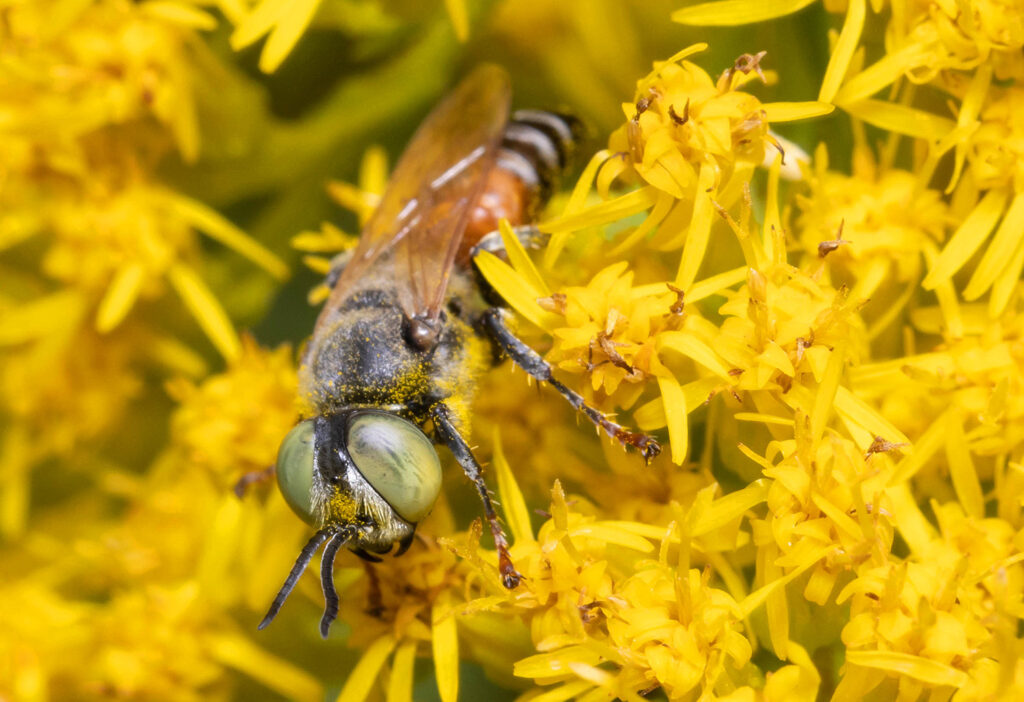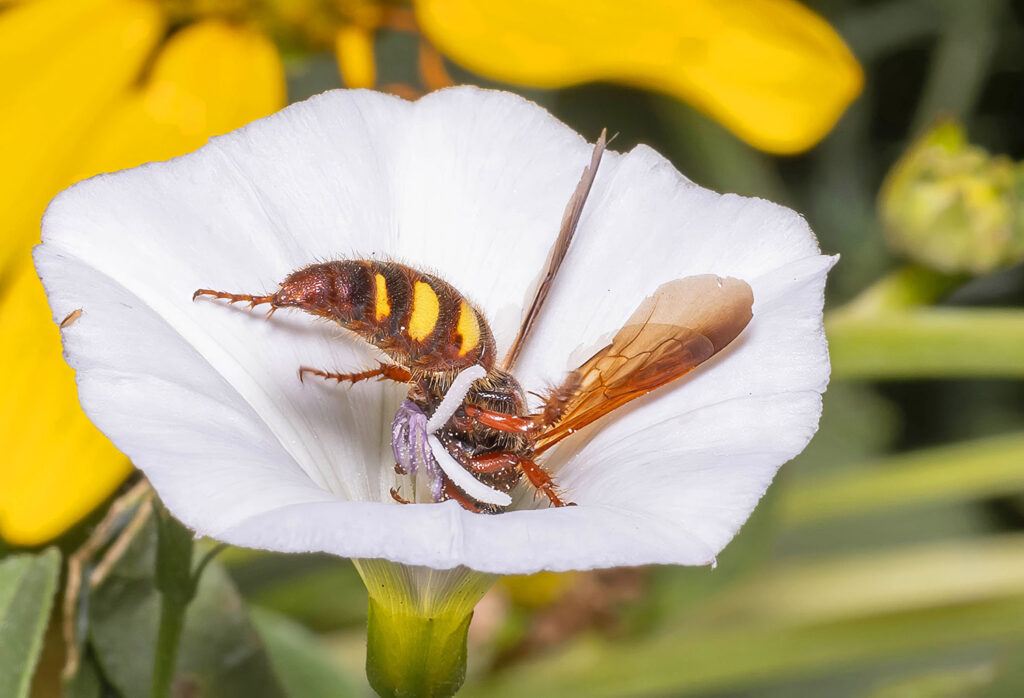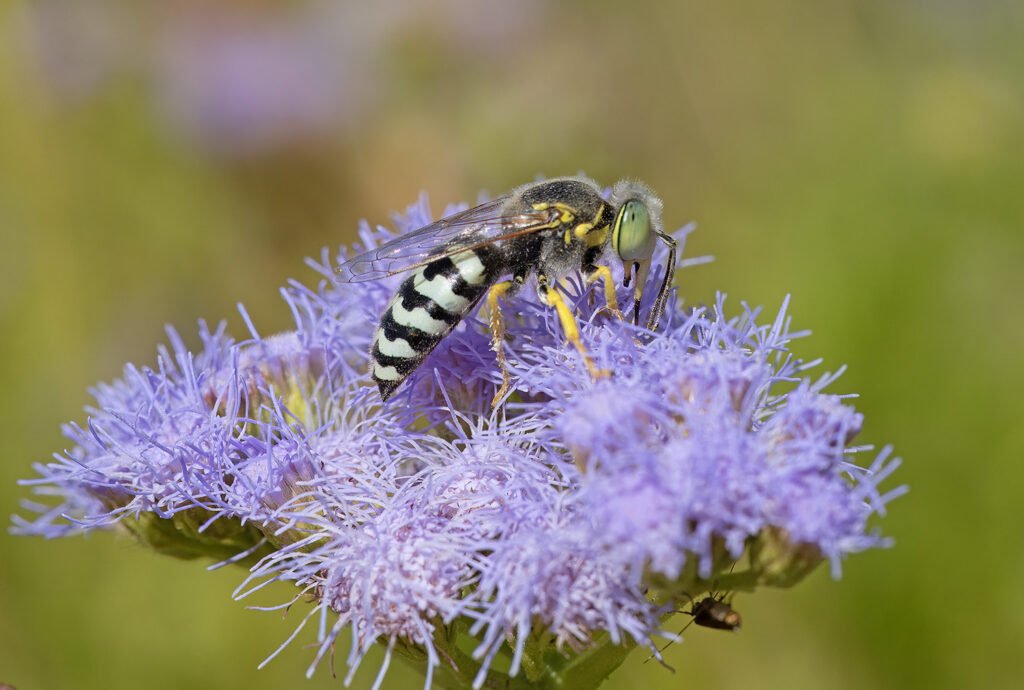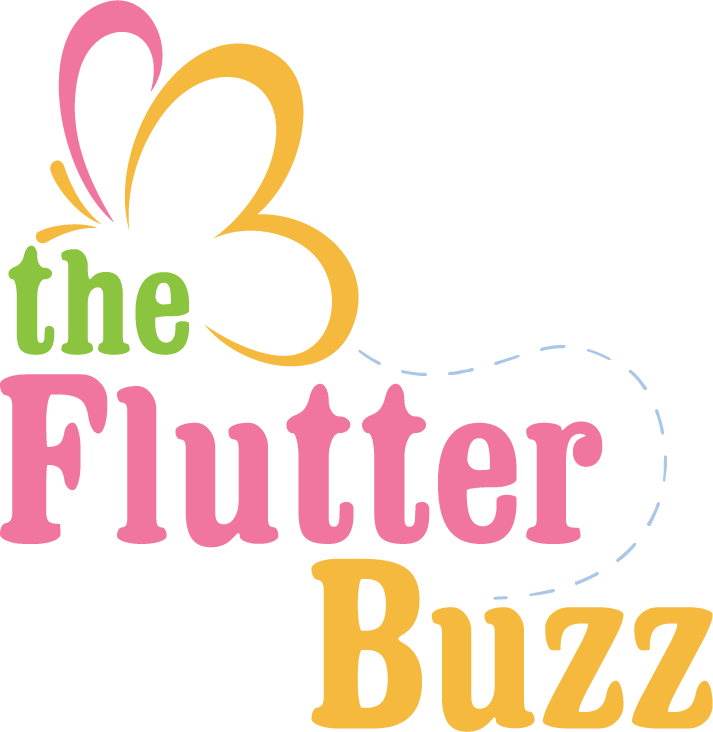
20 Sep The Importance of North America’s Wasp Species: Ecosystem Guardians and Natural Pest Control
In recent years, the decline of pollinators has become a growing concern across North America. Pollinators, including bees, butterflies, birds, and other insects, are essential for the reproduction of over 85% of the world’s flowering plants and contribute to the production of more than a third of our food crops . As habitats shrink due to urbanization and agricultural practices, creating pollinator-friendly gardens has become an effective way for individuals to contribute to the preservation of these crucial species.



Natural Pest Control Agents
One of the most significant benefits wasps provide is natural pest control. Many species of wasps are predatory, hunting a wide variety of insects to feed their young. Paper wasps, yellowjackets, and hornets capture caterpillars, flies, and other soft-bodied insects, paralyzing them and bringing them back to their nests. This natural predation helps to regulate pest populations, particularly in agricultural landscapes.
For example, studies have shown that paper wasps (Polistes spp.) can significantly reduce caterpillar infestations on crops such as corn and tobacco . These insects help farmers by reducing the need for chemical pesticides, making wasps natural allies in sustainable farming.
Pollinators in Disguise
Though not as efficient or well-known as bees, some species of wasps do contribute to pollination. Wasps are particularly attracted to certain plants that produce less nectar or are more difficult for bees to access. For instance, fig wasps (family Agaonidae) are essential for the pollination of fig trees, a relationship that has evolved over millions of years. Other wasps, such as those from the family Vespidae, can occasionally be seen visiting flowers, carrying pollen between plants .
While they may not be primary pollinators, wasps still add diversity to the group of insects that visit flowers. Their activity can support plant reproduction, particularly in ecosystems where bees may not be as dominant or when certain plants are adapted specifically for wasp pollination.
Key Players in Biodiversity and Ecosystem Health
Wasps occupy various niches in ecosystems. From solitary species, like mud daubers, to social species like yellowjackets, they play roles as both predators and prey. Predatory wasps help maintain the balance in insect populations, which can affect the overall health of an ecosystem.
In turn, wasps serve as an essential food source for many animals, including birds, mammals, amphibians, and other insects. The larvae of some parasitoid wasps (e.g., ichneumon wasps) develop inside or on their hosts, eventually killing them, which prevents certain pests, like caterpillars, from overrunning crops and native vegetation . These wasps contribute to the natural control of herbivorous insects, further supporting plant diversity and ecosystem resilience.
Scientific Research and Medical Applications
Wasps have also contributed to scientific advancements, particularly in the field of medicine. Researchers are studying the venom of certain species for potential applications in treating cancer. The venom of the Polybia paulista wasp, for instance, contains a peptide that selectively kills cancer cells without harming normal cells.
Additionally, parasitoid wasps are used as biological control agents in agriculture to manage pest populations. These species are released deliberately in fields and gardens to keep pests like aphids, caterpillars, and beetles in check, reducing the need for chemical interventions.
Wasps as Indicators of Environmental Health
The presence and abundance of wasp species can be an indicator of environmental health. Like many other insects, wasps are sensitive to changes in their habitats, such as pollution, climate change, and habitat loss. A decline in wasp populations can signal broader ecological problems that may also affect other species, including humans.
Protecting wasps and their habitats can help preserve biodiversity, maintain ecosystem services like pollination and pest control, and ensure that ecosystems remain healthy and resilient in the face of environmental pressures.
Conclusion
While wasps may not be the most beloved of insects, their importance to North America’s ecosystems is undeniable. From controlling pest populations and providing pollination services to contributing to scientific research, wasps play a variety of vital roles. The next time you encounter a wasp, take a moment to appreciate its contribution to the natural world, as these insects are much more than just a summer nuisance.
Sources:
- National Wildlife Federation. “Wasps and Their Importance in the Ecosystem.” Accessed September 20, 2024.
- Waser, N.M., et al. “Pollinator Diversity and Plant Reproduction.” Ecological Monographs, 1996.
- Dos Santos Cabrera, M.P., et al. “Selective Anticancer Activity of a Peptide from Polybia paulista Venom.” Cancer Biology & Therapy, 2015.
- Godfray, H.C.J. “Parasitoids: Behavioral and Evolutionary Ecology.” Princeton University Press, 1994.
- Tschinkel, Walter R. “The Ecological Role of Paper Wasps.” Journal of Insect Science, 2017.
